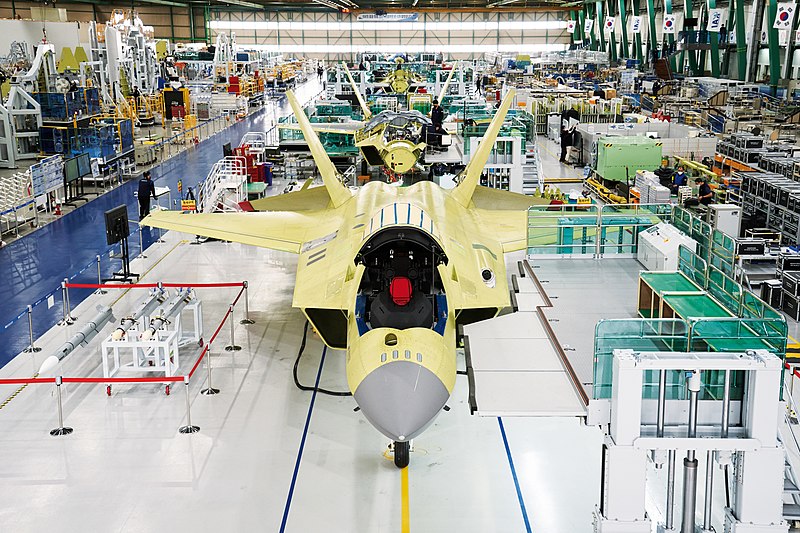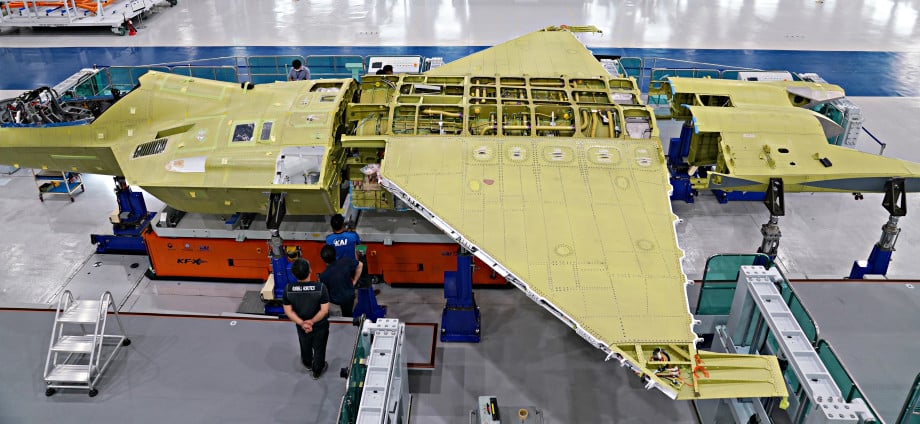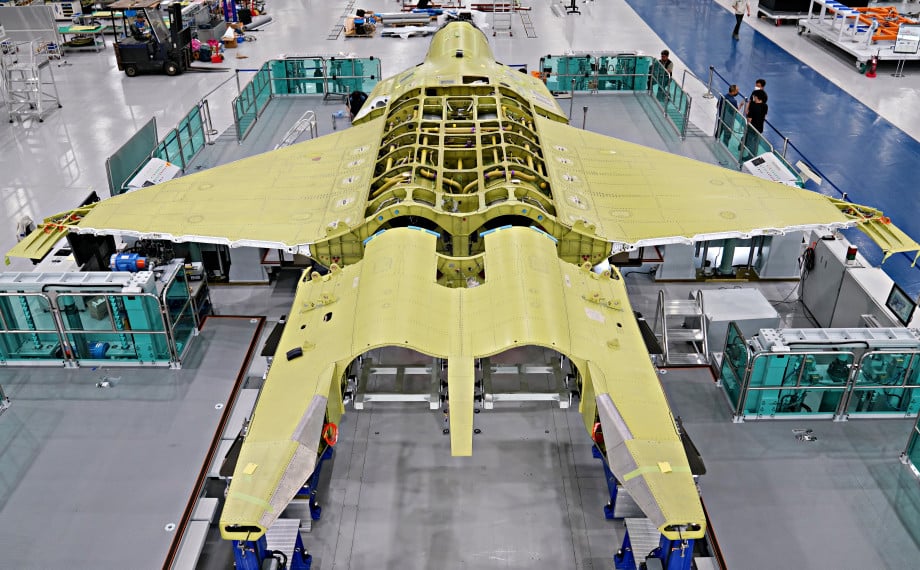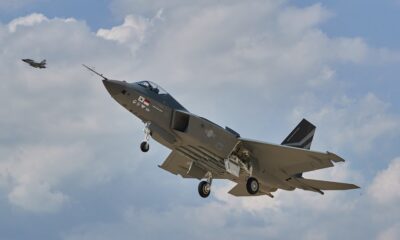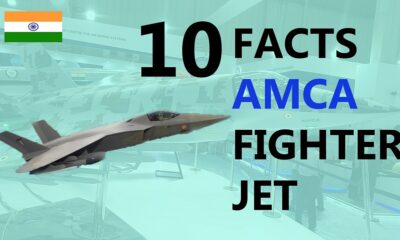Aviation
Top 8 facts about South Korean KF 21 Fighter jet: Specification, Partnerships, Weapons, and capacity
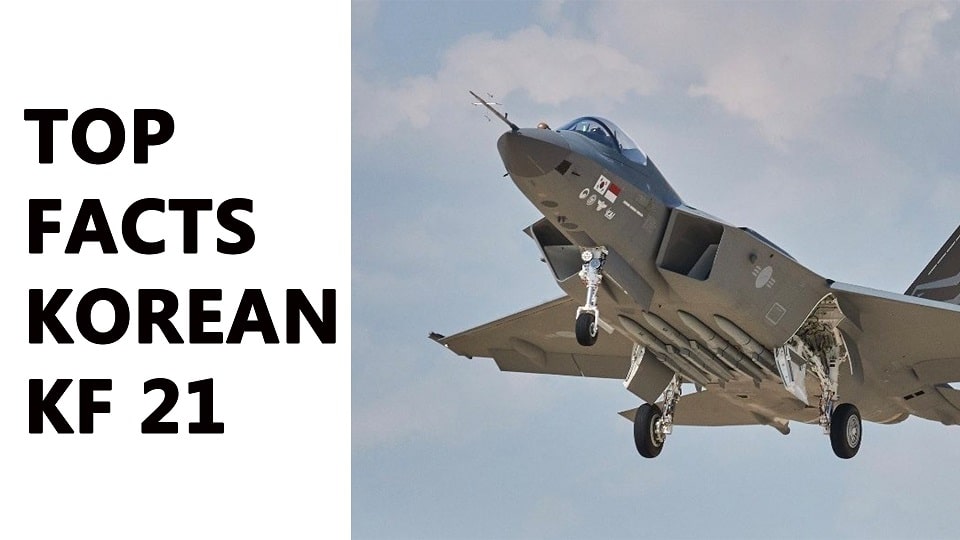
1. It took its first maiden flight in July 2022.
The Korean Aerospace Industries built the air superiority fighter KF 21 Bormae with Indonesia’s assistance. Its airframe is more stealthy than any fourth-generation fighter, but unlike fifth-generation fighters, it does not carry weapons through an internal bay.
It made its first flight from the production facility on July 19, 2022. The Korean name Bormae translates to “young Hawk” in English. At least 40 aircraft are expected to be delivered by 2028, according to the report. but it will also be offered on the international market.
2.It is a 4.5 Generation fighter jet.
To replace the outdated F4 and F5 fighter fleet, an alternative fighter is being developed for the Republic of Korea’s air force. It is a multirole fighter jet of the 4.5 generation, the source said. Initially, South Korea sought to develop a fighter aircraft that could outperform the Typhoon and Dassault Rafale.
Technically speaking, though, it necessitated extensive study and creation. They nevertheless made an effort to design a plane that would compete with the F16 Fighting Falcon in terms of combat range, a 34% longer airframe, and better weaponry.
3.Indonesia is a partener for KF 21 progrm.
Most nations cooperate in the program to lessen the burden of the financial aspects because it takes proper investments to develop any technology. In KF X, Indonesia joined the regional program in 2010 as per a committee agreement for 20% ownership. Later, however, KAI claimed that it had not made the agreed-upon payments. Later, an agreement was reached between Indonesia and South Korea to create a new cost-sharing plan by 2022.
4. KF 21 backed by Lockheed martin
The KF-21 program is supported by American titan Lockheed Martin, which is supplying the program with a number of design consultancy components. The staggering list of imported systems, along with numerous industrial-grade tools and consultancy to rely on for technical developments, includes everything from brake pads to flight controls systems, LRUs, landing gear, avionics, canopies, oxygen generators, radar, engines, ejection seats, and even the aircraft’s software management system.
As part of a purchase agreement, Lockheed Martin consented to transfer two dozen F-35A technologies. Four crucial technologies, AESA radar, infrared search and track (IRST), electro-optical targeting pod (EO TGP), and radio frequency identification (RFID), were, however, prohibited from export by the US government.
5. Stealth Fighter variant by 2035.
According to KAI, most of the systems may have been locally indigenous by the time the KF-21 Block III, which is expected to be a true stealth fighter variant by 2035, is released. However, until that time, the KF-21 is just a 4.5-generation fighter jet with elements of the 5th generation fighter, which is still being developed. Though the program is heavily supported by American defense industrial partners, which would still be under US control, must still be acknowledged. It will also take until 2035 before KAI has its own domestically developed technology.
6. Expensive military project in Korean history
Indonesia is said to be asked to reduce its share in the joint investment and development of the KF-21 by 5 percent and for more technology transfers than stipulated in the original agreement. The development of the KF-21 has been called the most expensive military project in Korean history, with a price tag of approximately 8.5 trillion won ($7.8 billion) for development alone. According to the government, 719 Korean businesses have participated in the development of the KF-21. About 65 percent of over 30,000 parts used in the prototype aircraft were made in Korea.
Features
The KF 21 can be operated by a single and double crew.
- It is 15 feet 5 inches tall, 55 feet 5 inches long, and has a wingspan of 36 feet 9 inches.
- It weighs 18,800 kg when empty and can support a maximum weight of 25,400 kg.
- It had a 2 GE 414 engine that can produce 57.8 kilonewtons without an afterburner and 97.9 kilonewtons with one.
- It has a range of 2,900 km and a top speed of Mach 1.81.
Speaking about the weapon package of the KF 21
- It has ten Hard points. which is equipped with air-to-air missiles such as the MBDA, AIM 120, Diehl IRIS, and AIM 9x.
- It features anti-ship missiles like AGM 84 Harpoon and air-to-ground missiles like Taurus and AGM-65.
- It is capable of transporting conventional and precision-guided bombs like JDAM, GBU, and KGGB.
Avionics
The KF 21 fighter jet has AESA radar, an infrared search and track system, an electro-optical targeting pod, datalink capabilities, a radiofrequency jammer, and many more characteristics. It is estimates the cost of the KF-21 at $65 million per unit.
Please share your thoughts on the Korean-built KF 21 fighter plane in the comments area.

Aviation
All passengers killed in plane crash, after pilot let his children to control the plane

When boarding a plane, passengers entrust their safety to the skilled hands of the pilot. However, tragedy struck when one of the flight ended in disaster as all passengers lost their lives in a horrific plane crash.
In 1994, during a flight from Moscow to Hong Kong, tragedy struck as an Aeroflot relief pilot made a fateful decision. In a move that would have devastating consequences, the pilot invited his own children into the cockpit to play with the controls. Little did anyone know, this seemingly innocent gesture would lead to the loss of all 75 lives aboard the aircraft.
It was a seemingly innocent act that led to catastrophic results. The relief pilot, Mr. Kudrinsky, invited his two children, Yana, 12, and Eldar, 15, into the cockpit during the late hours of the night. Little did anyone know, this simple gesture would set off a chain of events that would end in tragedy.
Once in the cockpit, the children were allowed to sit in the captain’s chair and play with the controls, unaware that they should have been disabled as the plane was in autopilot mode.
Eldar, perhaps in a moment of curiosity or innocence, held the control column down for a mere 30 seconds. Yet, in those brief moments, the autopilot disengaged, thrusting the aircraft into manual control.
By the time the pilots regained their seats and attempted to regain control, it was too late. Despite their efforts to pull the plane out of a dive, they overcorrected, causing the flight to climb almost vertically, ultimately stalling it.
Final moment Flight 593 crash
In the final moments, as the pilots struggled to stabilize the aircraft, Flight 593 crashed into the Kuznetsk Alatau Mountain range in southern Russia, completely obliterating the plane and claiming the lives of everyone on board.
Investigations revealed a chilling truth: there was no evidence of technical failure. Instead, the crash was attributed to the unthinkable decision to allow inexperienced hands to manipulate the controls of a commercial aircraft.
The black box recording captured the harrowing sequence of events, providing a grim reminder of the human cost of a lapse in judgment. In just over two minutes, the lives of all on board were tragically short, leaving behind a legacy of sorrow and unanswered questions.
Aviation
American Airlines Flight Attendant Orders First-Class Traveler to use Economy Restroom
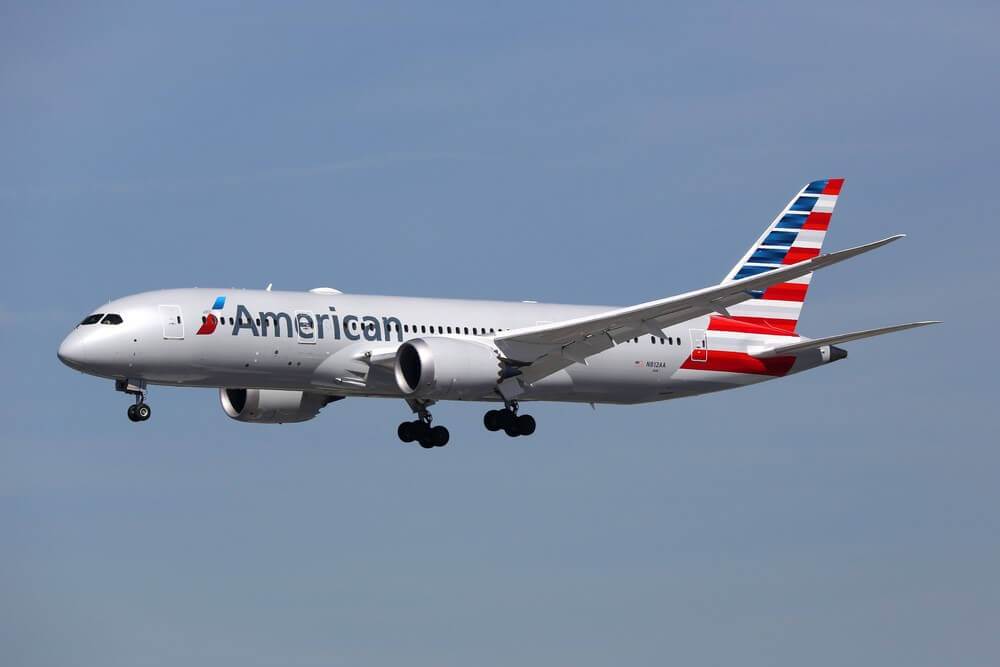
On a recent American Airlines flight from Chicago O’Hare to Phoenix, Pamela Hill-Veal, a retired circuit court judge, found herself at the center of a disturbing incident.
Despite traveling in First Class, she was directed by a flight attendant to use the Economy Class restroom, sparking allegations of racial discrimination. According to Hill-Veal, the ordeal began when she used the dedicated First Class lavatory during the flight. A flight attendant approached her, accusing her of slamming the door and issued a warning.
Despite remaining calm, Hill-Veal faced further confrontation when she attempted to use the First Class restroom again later in the flight. The situation escalated as the flight attendant persisted in berating Hill-Veal, who felt targeted due to her race. She highlighted the disparate treatment, noting that white passengers were not subjected to similar directives.
In a distressing turn, the flight attendant followed Hill-Veal to her seat and allegedly touched her while threatening arrest upon landing. This alarming encounter left Hill-Veal feeling humiliated and traumatized, impacting her ability to rest even after the flight.
American Airlines has responded, expressing a commitment to investigating the matter and addressing discrimination claims seriously. However, the incident underscores ongoing concerns about racial bias in air travel and the need for accountability in ensuring all passengers are treated with dignity and respect.
Aviation
Southwest CEO Signals Major Shift: Farewell to Open Seating
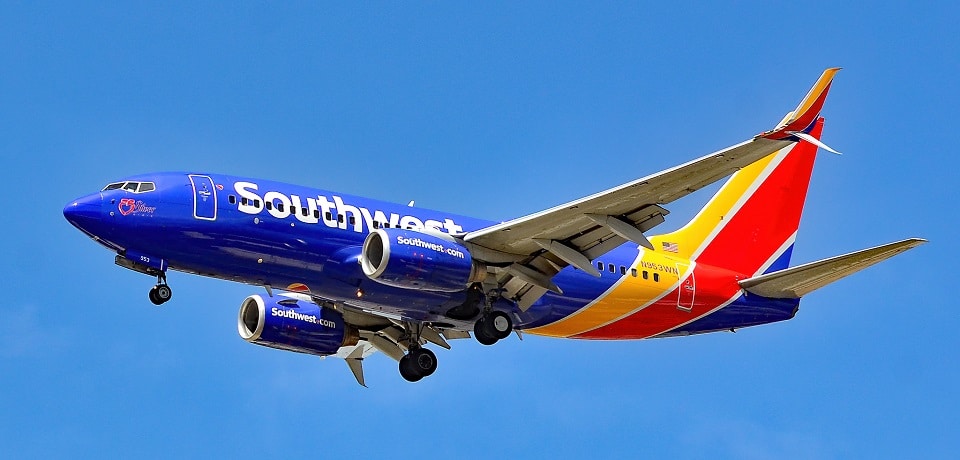
Southwest Airlines is contemplating a significant shift away from its traditional open seating policy, a move that could signal a departure from its long-standing business model.
The potential change, which would introduce assigned seating and premium seat options, is being considered to appeal to a younger demographic of travelers. This adjustment would mark one of the most substantial alterations for the carrier since its inception in 1971.
Unlike its competitors who have embraced premium seating offerings, Southwest has stuck to its open seating approach, albeit providing the option for early boarding at a fee. However, with rivals like United Airlines witnessing revenue growth from premium seating, Southwest is reevaluating its strategy. According to Forbes, the airline industry has seen a shift in customer preferences over time, prompting Southwest to reconsider its seating model designed during an era of lower load factors.
While Southwest CEO, Jordan,told to CNBC that he has neither confirmed nor denied the possibility of premium seating, he acknowledges that the company is exploring various options. He emphasized that while it’s still early in the decision-making process, the initial results are promising, hinting at potential changes in the future.
Southwest currently operates with a single economy class cabin across its all-Boeing 737 fleet, with no assigned seating. However, the airline does offer the option for early boarding for passengers to secure their preferred seats for an additional fee. Over the years, Southwest has maintained a focus on simplicity and user-friendliness in its offerings, striving to minimize costs and complexity.
In contrast, competitors like Delta and United have capitalized on revenue growth from premium seating options such as business class, demonstrating strong upsell rates. Analysts have repeatedly questioned Southwest about the potential for introducing premium seating or additional fees, although the airline has traditionally refrained from charging for the first two checked bags.
For now, the only way Southwest passengers can secure their preferred seats is by paying for an earlier boarding position, as the airline continues to operate without assigned seating, allowing passengers to choose their seats upon boarding in a predetermined order.

